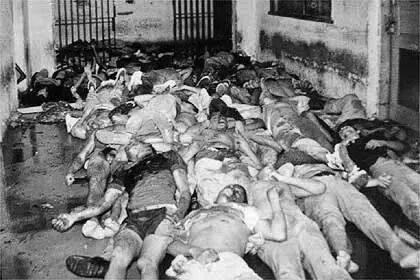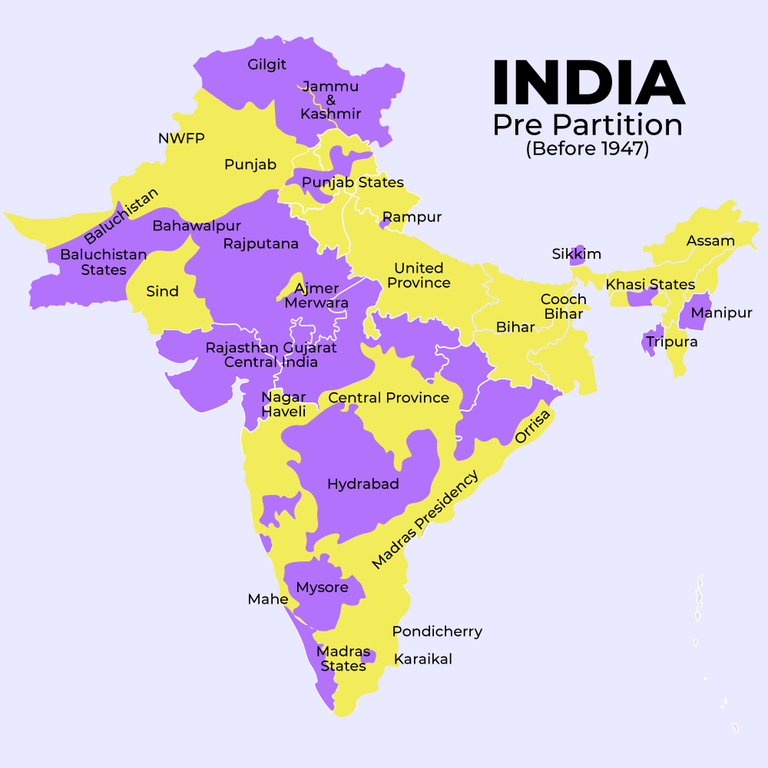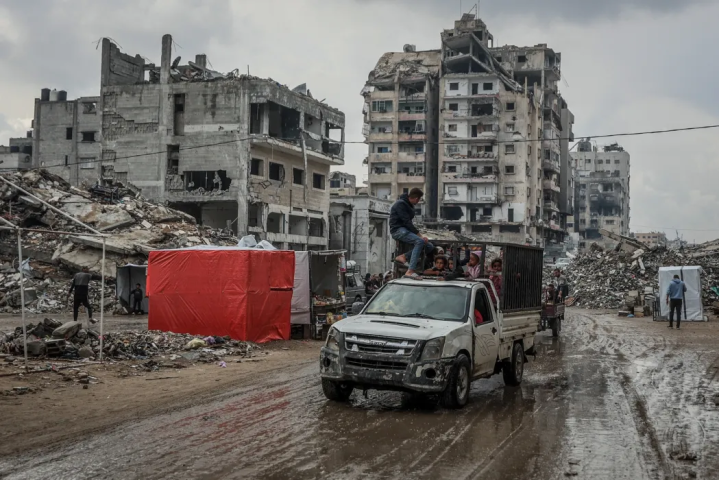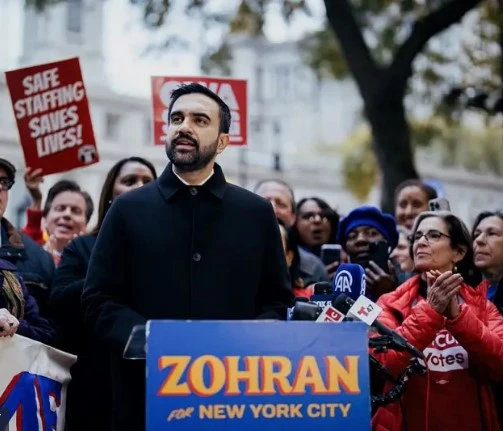2 Comments / Art / Literature, History, International, National / By left

Prof. Ameer Hamza Virk
This is a story of tears, sighs, hiccups, sobs, and tales of love, hatred, and prejudices. It was not a partition of India. It split two great nations of the subcontinent Punjabies and Bengalies. The Partition is a subject on which much has been written in the past and much will be written in the future, but there are many aspects of it that are still hidden from the public eyes. Many stories are untold. The people of Punjab, who were known as the protectors of each other’s honor since the time of Dulla Bhatti, in the name of religion, broke the mountains of such brutality, that in modern history, such barbarism has no parallels. It is an insult to humanity. Somewhere, it happened to one person at the hands of another person. Poets and writers have written a lot about this tragedy, which makes one cry and heart suffers from an unconscious sadness. One of a Punjabi poet Noori Kembo Ka says:
SONA DAY KAY SIKKA VEHAJEA
KIDDI LAGGI AAY BHULL JINNAH NOO
سونا دے کے سکا ویھاجیا
کڈی لگی اے بھل جناح نوں
And many others created many masterpieces of grief. A Pakpatni poet Khadam Chishti says like Amrita Preetam:
VELAY WAND KETI SUKHAN KAND KETI
PANJAN PANEAN DA PANI ZEHR HOYA
ویلے ونڈ کیتی سکھاں کنڈ کیتی
پنجاں پانیاں دا پانی زہر ہویا
When Ustad Daman was invited to a “Mushaera” in Dehli and he recited his poem in the presence of Prime Minister Nehru:
JAGAN WALEAN RAJ KAY LUTYA AAY
SOAY TUSI VE HO SOAY ASEEN VE HAN
LALI AKHEAN DE PAE DASDI AAY
ROAY TUSI VE HO ROAY ASEEN VE HAN
جاگن والیاں رج کے لٹیا اے
سوئے تسیں وی ہو سوئے اسیں وی ہاں
لالی اکھیاں دی پئی دسدی اے
روئے تسیں وی ہو روئے اسیں وی ہاں
کوئی گڈی دیاں دو لیناں،
جتھے ماھیا مل جاوے
اوتھے بیٹھ کے رو لینا
When India was partitioned into two separate states in August 1947, the border between Hindu-majority India and Muslim-majority Pakistan was kept secret until the very last minute. The Punjab was split down the middle and many people did not know if they would be living in Pakistan or India. The decision of the man drawing the line was not just an administrative formality; it was a matter of life and death. One million died and 15 million were displaced as Muslims fled to Pakistan, and Hindus and Sikhs headed in the opposite direction.
Shift from Divide and Rule to Divide and Quit, The Divide and Rule policy, also known as the “divide and conquer” strategy, was a British colonialist policy used in India to keep the different Indian religions and ethnicities divided. This allowed the British to maintain their power and control over India for centuries. In India they started this policy from the first partition of Bengal in to East and West Bengal in 1905 and acceptance of separate electorate demand of Muslims in 1906. Everyone is aware of the divide and rule policy of the British in the subcontinent. Therefore, there is no need to talk much about it. When the British and other imperialists left their colonies, they adopted the policy of “Divide and Quit”. A famous writer and Columnist Christopher Hitchens wrote a glorious column in The Nation on January 17, 2002.
“One of the old school of the British colonial service, a man with the irresistible name of Sir Penderel Moon, wrote a book about the end of empire and titled it Divide and Quit. At whose expense was this extremely dry joke? Look around the global scene today, and you will find the landscape pitted with the shards of that very policy. In Israel /Palestine and in Kashmir, and in both to an astonishing extent, the contours of the fighting are what they were when the Union Jack was hauled down in 1947. In Northern Ireland, despite the lapse of a much longer period of time, the battle lines follow the original map of postcolonial amputation and the problem–how to confect a plausible swath of Ireland with the minimum number of Catholics and the maximum number of Protestants and yet call it British–is still with us.” “The British decision to carve off Kuwait from the soil of Iraq had obvious repercussions. So does the British separation of the Malvinas/Falklands archipelago from mainland Argentina. Neither NATO nor the European Union has been able to exert sufficient unifying power to undo the consequences of British divide-and-rule in Cyprus, which is another of those apparently peripheral problems that threaten to detonate or implode at any moment.”
Hitchiens continued, “It was Sir Anthony Eden who proposed to President Eisenhower and John Foster Dulles the division of Vietnam into two states in 1954. Lord Carrington, the British foreign secretary, hoping thereby to preserve a white cantonment, floated the idea of partitioning South Africa just before Nelson Mandela was released from prison. It was he and his successor, Lord Owen, who proposed the calamitous partition of Bosnia-Herzegovina and the confirmation of ethnic cleansing.”
“It goes on, in other words. And so far, almost every one of these partitions has led either to another partition or to another war or both. I spent some part of last fall on the frontiers of Afghanistan and Kashmir, and was amazed all over again by how much damage my forefathers did by their hasty and opportunistic retreat.” “One has to bear in mind that partition involves a series of sub partitions and minor mutilations. Thus, in order to create “two” states out of what had been British-ruled India; the last-ditch colonialists had also to partition the ancient states of Punjab and Sindh in the west, and Bengal and Assam in the east.”
So many human tragedies were born from this partition of 1947.All this was in accordance with the policy of divide and quit. It was to provide bases for this massacre that the British partitioned Punjab and Bengal and ran away with a premature transfer of power in a state of extreme emergency. Some of historians viewed divide and quit policy as a conspiracy. Manmath Nath Das wrote a book (Fateful Events of 1947: The Secret British Game of Divide and Quit) on this policy. According to Das “the 1947 saw the demise of the British Indian Empire and the emergence of India as an independent country. It also witnessed dubious endeavor on part of the departing rulers in partitioning a sub-continent into India and Pakistan.”
“Side by side, their deliberate game to balkanize India by keeping some princely States independent was too obvious. The year was full of fateful events since the surgery of separation was an unusual phenomenon, causing immense bloodletting. Compressed between the natural demand for national unity and an artificially engineered two-nation theory, the desperate British went in for a comprehensive conspiracy to take advantage of the continuing communal civil war for achieving their sinister design of ‘Divide and Quit’.
“The book, constructed from original source-material including confidential documents of some of the British Viceroys and officers as well as some letters of Winston Churchill to Muhammad Ali Jinnah deals with the intricacies of the problems which overwhelmed the greatest men of India like inexorable forces of Time.
Everybody played his role and played it well against internal and external forces to preserve the unity of a great nation and an ancient country. But, Time was against India’s formidable patriots who had to suffer the agony of seeing their life’s hopes disappear in disappointment.”
What is next and what is to be done?
It has been 75 years since India and Pakistan became independent. Is it Independence or not, but division and enmity were very ripe. Even after a century, the two neighboring states are still like two enemies. The colonialism has been over, the British also left, but we are economically, politically and culturally in the modern (nue) colonial era. In the process of partition, millions of men, women and children were killed. The people of both states want love and friendship again, but the ruling powers have not learned a lesson even in 75 years. In both countries, there are camps of hunger, poverty, ignorance, unemployment, and poverty. After four hundred years of wars and civil wars, Europe learnt lessons and had adopted the path of peace and development. But in the end, it is the people who have to go ahead and compel the rulers by playing their full role to end the hostile relations between the two states, and develop friendship, peace, mutual trade and people to people contact. This is real path of the prosperity and progress of both the states. Both sides of border have same civilization, language, tribes; families have same blood and race. Every Punjabi on both sides has same sentiments of love peace and “Sanjh” like this:
نفی تم ہو نہیں سکتے ، جمع سے تم کو نفرت ہے
تقسیم تم کو کرتے ہیں تو ضرب ِدل پر لگتی ہے
NAFEE TUM HO NAHEE SAKTAY, JAMA SAY TUM KO NAFRAT HAY
TAQSEEM TUM KO KRTAY HAN TO ZARAB DIL PR LAGTI HAY
Courtsey: Editorial “Salahiyat”,A publication of South Asia Research Center of India, August 2022 Vol-1, No-5 .
![]()








